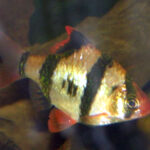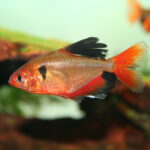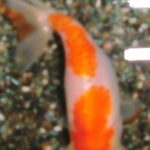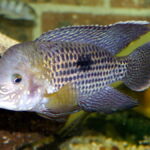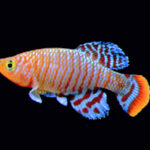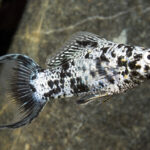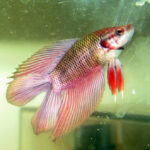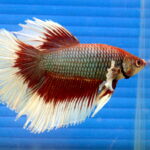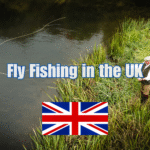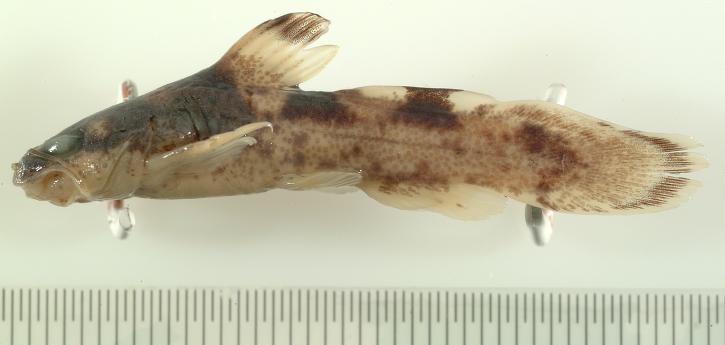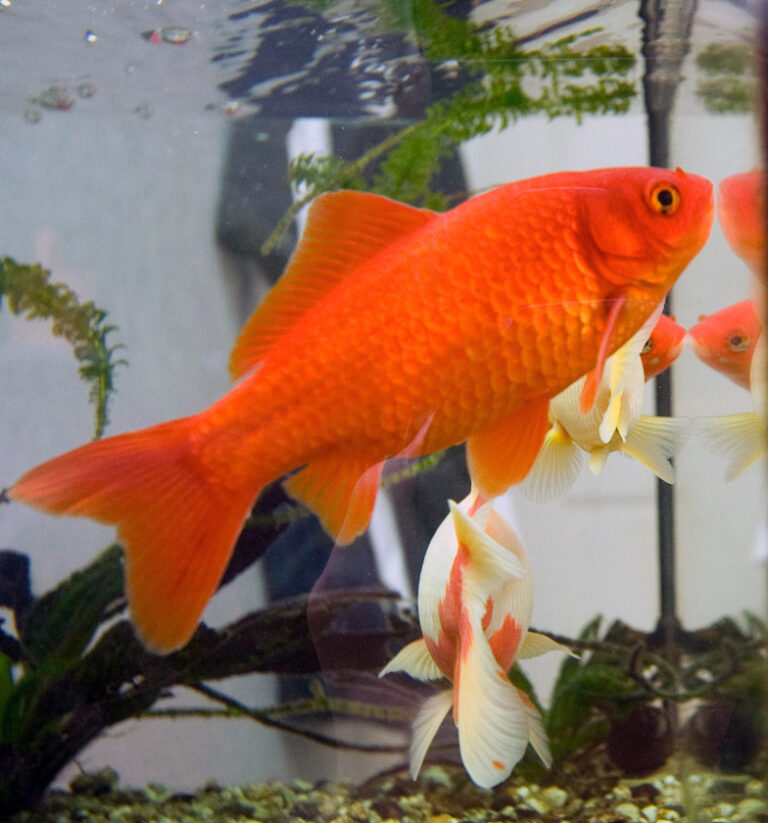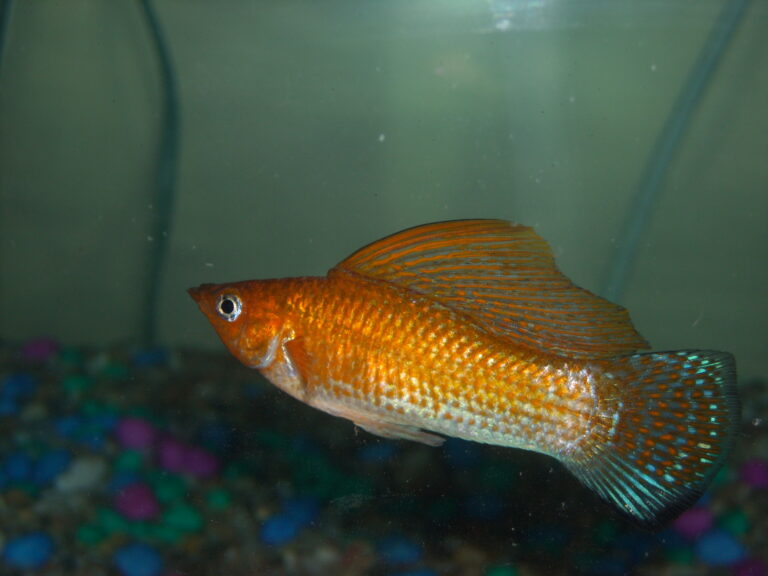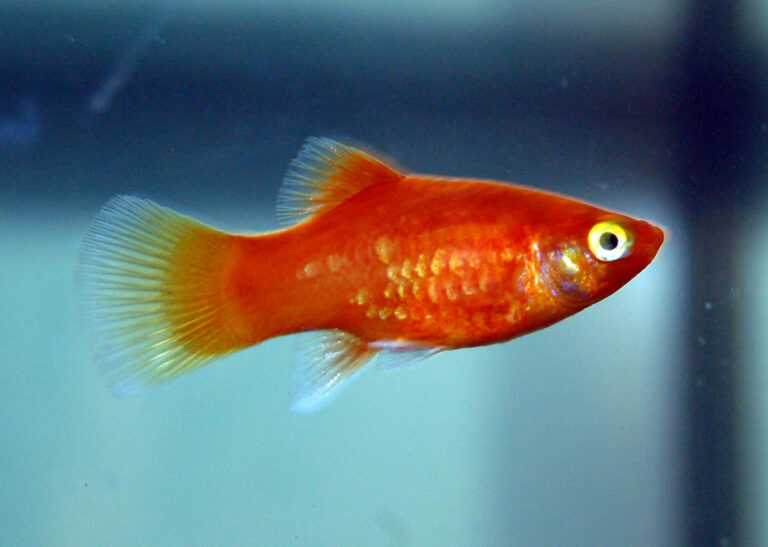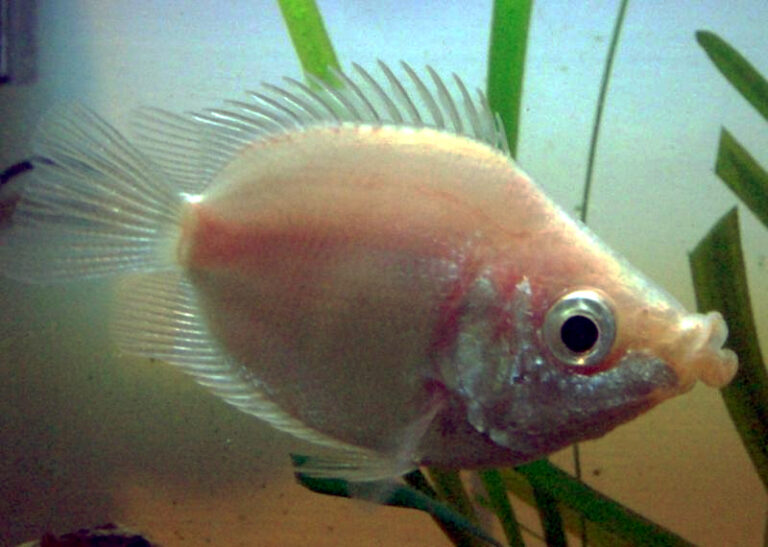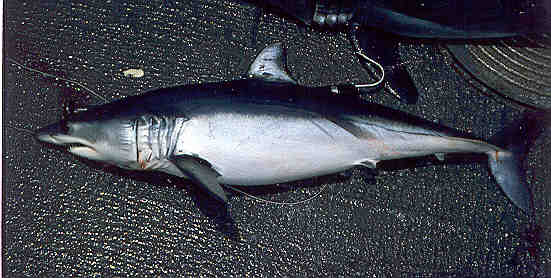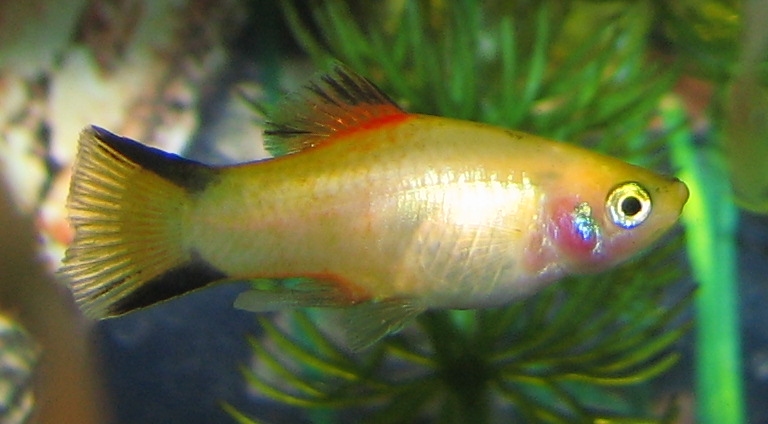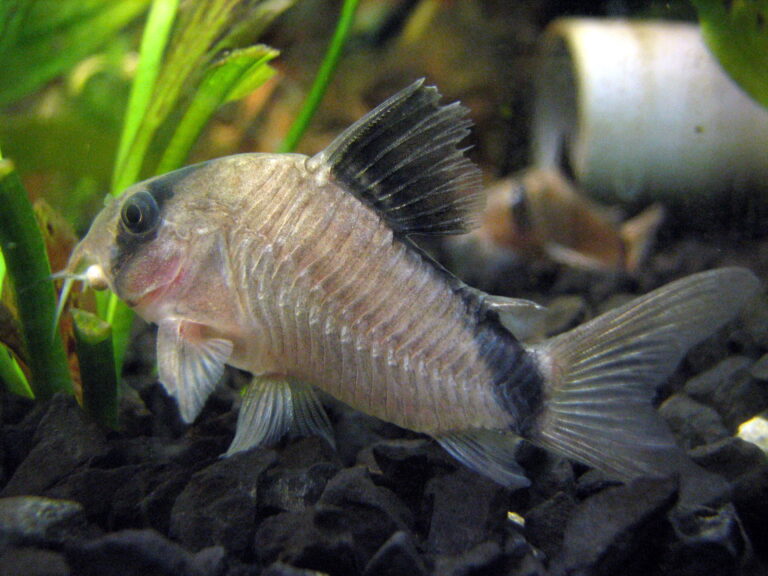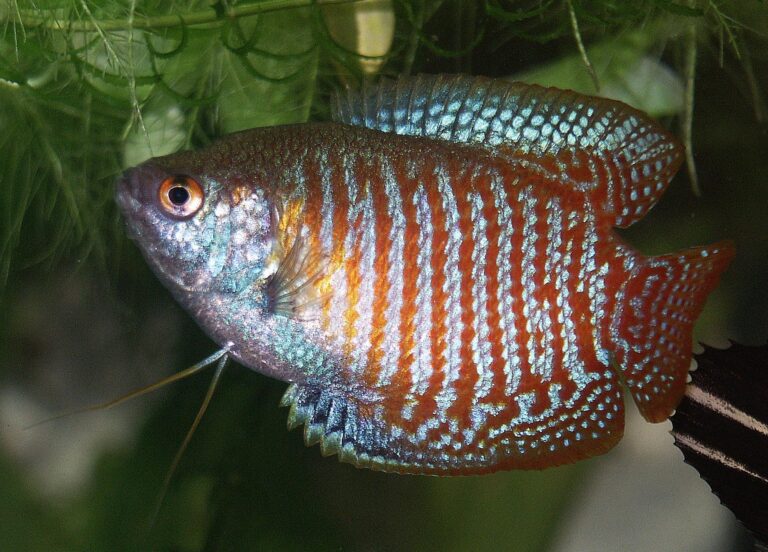Betta Fish
By Ryan Maron | Last Modified: June 3, 2025
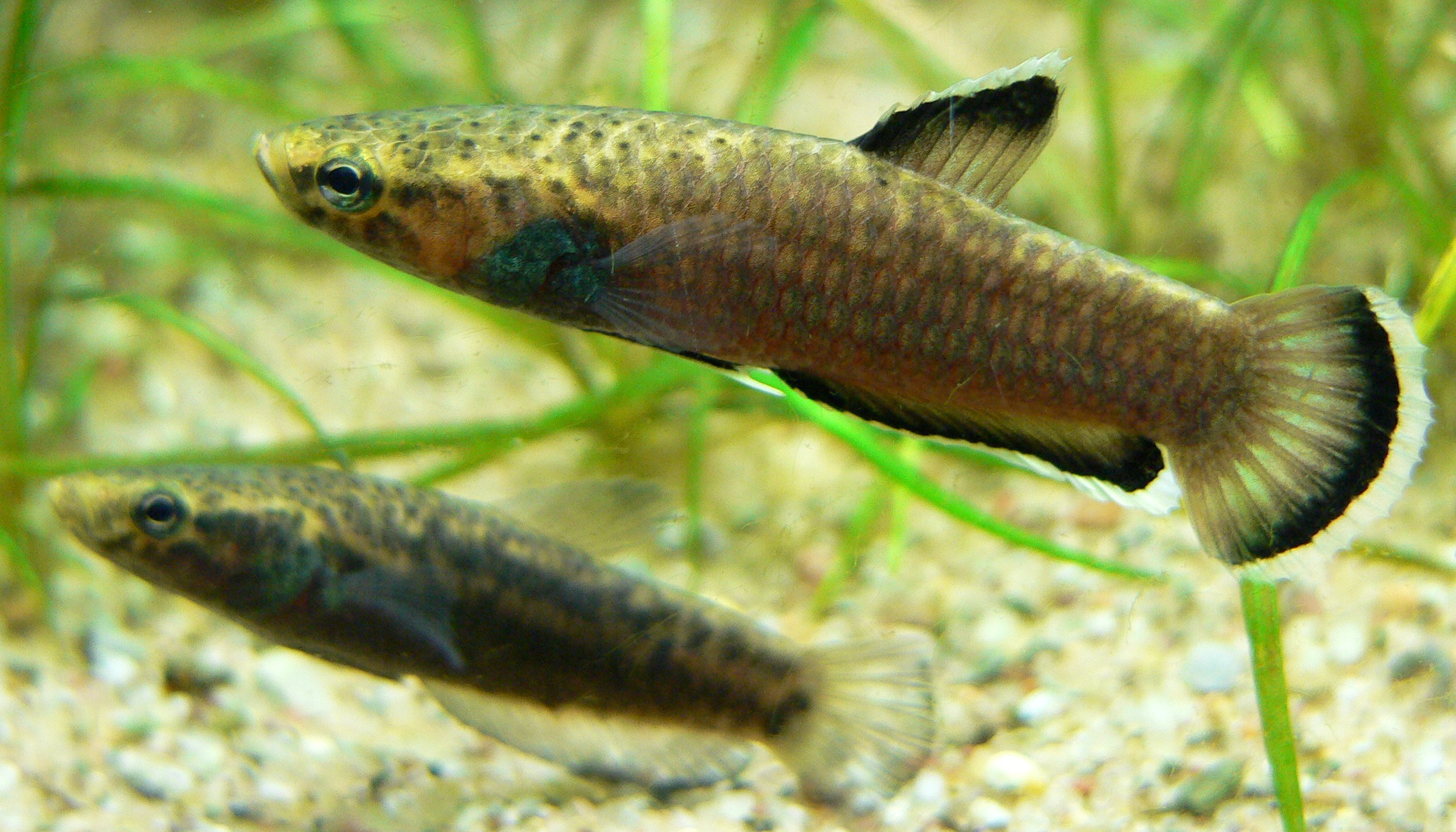
The Betta Fish, scientifically known as Betta splendens, is one of the most visually captivating and widely recognized freshwater species in the aquarium trade. Native to the shallow waters of Southeast Asia, particularly Thailand (formerly Siam), these fish have earned the moniker “Siamese fighting fish” due to the males’ naturally aggressive territorial behavior. Characterized by their vibrant colors and flowing fins, bettas have become prized specimens among aquarists worldwide, evolving from their wild ancestors into hundreds of selectively bred varieties that showcase an extraordinary palette of hues and fin structures.
Ecologically, betta fish inhabit slow-moving waters including rice paddies, floodplains, and canals where they play a significant role in controlling mosquito larvae populations. Their specialized labyrinth organ—an adaptation that allows them to breathe atmospheric oxygen—enables them to survive in oxygen-depleted waters where few other fish species can thrive. This remarkable adaptation has shaped not only their natural history but also their significance in both Asian culture and the global ornamental fish industry.
| Feature | Details |
| Common Name | Betta Fish, Siamese Fighting Fish |
| Scientific Name | Betta splendens |
| Family | Osphronemidae |
| Typical Size | 5-7 cm (2-3 inches) |
| Habitat | Shallow freshwater; rice paddies, slow streams, floodplains |
| Diet | Carnivorous; insects, larvae, small crustaceans |
| Distribution | Southeast Asia (Thailand, Cambodia, Laos, Vietnam) |
| Conservation Status | Vulnerable (wild populations) |
Taxonomy & Classification
Betta fish belong to the family Osphronemidae, which encompasses the gouramis and paradise fish—a diverse group of labyrinth fish from Asia. The genus Betta includes over 70 recognized species, though Betta splendens is by far the most commercially significant and widely kept. Taxonomically positioned within the order Anabantiformes, bettas are classified as follows:
- Kingdom: Animalia
- Phylum: Chordata
- Class: Actinopterygii (ray-finned fishes)
- Order: Anabantiformes
- Family: Osphronemidae
- Genus: Betta
- Species: B. splendens
The species was first formally described by Charles Tate Regan in 1910, though they had been documented in Thai literature centuries earlier. The scientific name is derived from “bettah,” a native term for these fish, while “splendens” comes from Latin, meaning “shining” or “splendid”—aptly characterizing their vibrant appearance.
Notably, the domesticated betta fish that dominate the aquarium trade represent a distinct lineage from their wild counterparts. Through selective breeding practices beginning in Thailand over 800 years ago, domestic bettas have developed significantly larger fins, more intense coloration, and distinct fin variations compared to the shorter-finned, typically brown or green wild specimens. FishBase taxonomic records confirm that despite these phenotypic differences, domestic and wild bettas remain the same species genetically.
Physical Description
Betta fish exhibit remarkable sexual dimorphism, with males typically displaying the spectacular finnage and vibrant coloration that has made the species famous in the aquarium trade. Wild bettas generally possess a fusiform (spindle-shaped) body with relatively short fins, allowing efficient movement through dense vegetation. However, centuries of selective breeding have produced dramatic variations in domestic specimens.
Male bettas showcase elongated dorsal, anal, and caudal fins that billow like flowing fabric when they swim. These fins can take various forms, including veil tail (long, flowing), halfmoon (180-degree spread), crown tail (ray extensions creating a crown-like appearance), plakat (short-finned), and numerous other varieties. Females typically exhibit much shorter fins and less intense coloration, though they share the same basic body structure.
The betta’s body typically measures 5-7 cm (2-3 inches) in length, with some specimens reaching up to 8 cm. Their coloration spans virtually the entire spectrum, from rich reds, blues, and purples to yellows, whites, blacks, and metallic hues. Many display multicolored patterns including marble, butterfly (two-toned fins), and koi (orange, white, and black patches). This extraordinary color diversity results from selective breeding manipulating various pigment cells (chromatophores) that determine coloration.
A defining anatomical feature of all bettas is the labyrinth organ—a maze-like structure of folded tissues above the gills that allows these fish to extract oxygen directly from air. This adaptation enables them to survive in oxygen-depleted waters by periodically gulping air at the surface. Other notable physical characteristics include:
- A laterally compressed body form
- A slightly upturned mouth adapted for surface feeding
- Forward-positioned eyes providing good frontal vision
- Small scales that contribute to their smooth appearance
- Prominent operculum (gill covers) that flare during displays
According to research published in the Behavioral Ecology journal, the striking coloration and elaborate fins of males primarily serve as sexual signals and intimidation displays toward rival males, with the most vibrantly colored individuals often achieving reproductive advantage.
Habitat & Distribution
In their natural environment, betta fish inhabit the freshwater ecosystems of Southeast Asia, with a native range encompassing Thailand, Cambodia, Laos, and Vietnam. These regions are characterized by a tropical monsoon climate with distinct wet and dry seasons that have profoundly shaped betta biology and behavior. Wild populations primarily occupy shallow, slow-moving waters including rice paddies, marshes, floodplains, and sluggish streams.
These natural habitats typically feature:
- Shallow water depths (10-50 cm)
- Dense aquatic vegetation providing shelter and territory boundaries
- Warm water temperatures ranging from 24-30°C (75-86°F)
- Soft, slightly acidic water conditions (pH 6.0-7.0)
- Low dissolved oxygen levels, particularly during dry seasons
- Substrate composed of silt, mud, and decaying organic matter
The most significant concentration of wild betta populations occurs in the central plains of Thailand, particularly in the Chao Phraya River basin, where they inhabit both natural wetlands and human-modified environments like rice fields and drainage canals. Their ability to thrive in these anthropogenic habitats has facilitated their long relationship with humans in the region.
The seasonal fluctuations in water levels have been instrumental in shaping betta adaptations. During dry seasons, water bodies may shrink dramatically or even temporarily disappear, compelling bettas to survive in isolated puddles or damp mud. Their labyrinth organ adaptation enables survival in these extreme conditions when gill respiration alone would be insufficient due to depleted oxygen levels.
While wild bettas have historically been abundant throughout their range, habitat destruction from agricultural intensification, urbanization, and water pollution has significantly reduced their natural populations. The IUCN Red List currently categorizes wild Betta splendens as Vulnerable, with continuing population decline noted across much of their original range. Paradoxically, while domestic varieties flourish globally in the aquarium trade, their wild ancestors face increasing threat of extinction in their native habitats.
Diet & Feeding Behavior
Betta fish are primarily carnivorous, with a natural diet consisting predominantly of small aquatic invertebrates. In their native habitats, they function as opportunistic predators, consuming various protein-rich food sources available in their environment. Their feeding strategy is largely shaped by their position in the water column, as they predominantly hunt near the surface where they can utilize their upward-facing mouth to capture prey.
The wild betta diet typically includes:
- Mosquito larvae and other aquatic insect larvae
- Small crustaceans such as water fleas (Daphnia) and copepods
- Bloodworms and other small annelids
- Zooplankton
- Flying insects that fall onto the water surface
- Occasionally, fish fry and other tiny vertebrates
Betta feeding behavior is characterized by quick, precise strikes at prey items. Their forward-positioned eyes provide excellent binocular vision for targeting, while their specialized mouth is adapted for surface feeding. When hunting, bettas typically approach prey slowly, orient themselves, and then launch a rapid strike that creates negative pressure to suck in the prey item along with a small amount of water.
In captivity, bettas readily accept prepared foods including specialized betta pellets, frozen or freeze-dried invertebrates, and live foods. Their dietary requirements include high protein content (approximately 40%) and substantial fat content (minimum 8-10%) to support their metabolic needs and maintain their vibrant coloration. Unlike many aquarium fish, bettas have a relatively short digestive tract that processes food quickly, making them prone to constipation if fed exclusively dry foods.
Nutritional research conducted at Kasetsart University in Thailand has demonstrated that diet quality significantly impacts both coloration intensity and reproductive success in bettas. Carotenoid-rich foods, in particular, enhance the red, orange, and yellow pigmentation that contributes to their ornamental value. According to findings published in Aquaculture Research, specific nutritional profiles can enhance immunocompetence and stress resistance in addition to visual appeal.
Feeding frequency for adult bettas typically ranges from once to twice daily, with portion sizes that can be consumed within two minutes to prevent overfeeding and subsequent water quality issues. Juvenile bettas require more frequent feeding (3-4 times daily) to support their rapid growth and development.
Behavior & Adaptations
The betta fish exhibits a fascinating behavioral repertoire dominated by their well-documented territorial aggression, particularly among males. This territorial behavior is intrinsically linked to their reproductive strategy and has been harnessed in the traditional practice of fish fighting throughout Southeast Asia, earning them their common name “Siamese fighting fish.”
Male bettas establish and vigorously defend territories in their natural habitat, with each fish claiming an area of approximately 1 square meter. When two males encounter each other, they engage in elaborate threat displays that include:
- Gill cover (operculum) flaring to increase apparent size
- Fin spreading to maximize visual impact
- Intensification of color through physiological control of chromatophores
- Lateral displays where they position themselves side-by-side to compare size
- Creation of bubble nests even during confrontations (signaling reproductive fitness)
If these initial displays fail to establish dominance, physical combat may ensue, with fish attempting to bite fins and flanks of opponents. In the wild, these confrontations rarely result in death as the subordinate fish can retreat, but in confined spaces, serious injury can occur. This aggressive disposition is significantly reduced in females, who may establish loose hierarchies but rarely engage in serious combat.
Perhaps the most remarkable adaptation of the betta is its labyrinth organ, an auxiliary breathing structure that allows atmospheric oxygen uptake. This specialized organ consists of highly vascularized, maze-like folded tissues that extract oxygen from gulped air. The evolution of this structure has enabled bettas to inhabit oxygen-depleted waters where gill respiration alone would be insufficient. Bettas must access the surface periodically (typically every 10-15 minutes) to breathe air, making them obligate air-breathers despite their aquatic lifestyle.
Other notable behavioral traits and adaptations include:
- Bubble nest construction by males, where they create floating nests of saliva-coated air bubbles for egg incubation
- Jump-dispersal capability, allowing them to move between water bodies during flooding or to escape predators
- Remarkable environmental tolerance, surviving temperature fluctuations between 20-35°C
- The ability to enter a state of torpor during adverse conditions, reducing metabolic demands
- Recognition of human caretakers and associated feeding cues
According to studies from Animal Behaviour journal, bettas display cognitive abilities including spatial learning and object discrimination that exceed what might be expected from a fish with a relatively small brain. This cognitive capacity likely evolved to support complex territorial behavior and mate selection in their structurally complex natural habitats.
Reproduction & Life Cycle
Betta fish employ a fascinating reproductive strategy classified as paternal mouthbrooding, a relatively unusual approach among fish species. The reproductive cycle begins with the male constructing a bubble nest—an aggregation of air bubbles bound together with saliva secretions that contain glycoprotein—typically built among floating vegetation or beneath broad leaves. This structure serves both as a territorial marker and as the incubation site for fertilized eggs.
When a receptive female enters a male’s territory, an elaborate courtship ritual ensues:
- The male displays vibrant coloration and performs a dance-like swimming pattern
- He flares his fins and gill covers to appear larger and more impressive
- The female responds by darkening in color and developing visible vertical “breeding bars”
- The pair engage in a courtship “dance” involving circling and fin displays
- If receptive, the female allows the male to approach
During spawning, the male wraps his body around the female in a tight embrace called the “nuptial clasp.” This position allows the male to fertilize the eggs externally as the female releases them. As eggs are released and fertilized, they initially sink, but both fish—primarily the male—collect the eggs in their mouths and carefully place them in the bubble nest. A single spawning event typically produces 30-40 eggs, though highly conditioned females may produce up to 500.
Following spawning, the male assumes sole responsibility for parental care, aggressively driving the female away to prevent egg predation. He maintains the bubble nest, retrieving any eggs that fall and returning them to the safety of the bubbles. The eggs typically hatch within 24-48 hours, depending on water temperature. The resulting fry remain in the bubble nest for an additional 3-5 days while they absorb their yolk sacs, after which they become free-swimming.
The developmental stages of betta fish include:
- Eggs: Transparent, 1mm in diameter
- Hatchlings: Virtually immobile larvae with prominent yolk sacs
- Free-swimming fry: Begin to navigate and accept microscopic foods at 3-5 days
- Juvenile stage: Rapid growth period lasting 2-3 months
- Sexual maturity: Reached at approximately 3-5 months of age
During the juvenile stage, all young bettas look similar regardless of sex, with short fins and subdued coloration. Sexual dimorphism becomes apparent around 8-10 weeks as males begin developing longer fins and more intense coloration. According to research published in Aquaculture, water temperature significantly influences development rate, with optimal growth occurring between 28-30°C (82-86°F).
The typical lifespan of a betta fish ranges from 2-4 years in captivity, with wild specimens generally living shorter lives due to predation and environmental challenges. Reproductive activity typically peaks between 4-12 months of age, gradually declining thereafter as the fish ages.
Predators & Threats
Despite their reputation as fighters, betta fish face numerous predatory threats in their natural environment. Their relatively small size and the shallow, accessible waters they inhabit make them vulnerable to predation from multiple sources. In their native Southeast Asian habitats, common predators include:
- Wading birds such as herons and egrets
- Larger fish species including snakeheads (Channa spp.) and climbing perch (Anabas testudineus)
- Water snakes, particularly the piscivorous species like Enhydris enhydris
- Various amphibians, including larger frogs and toads
- Aquatic invertebrates such as predatory water beetles, dragonfly nymphs, and water scorpions
- Terrestrial predators like monitor lizards that hunt in shallow waters
The betta’s ability to survive in oxygen-depleted waters that exclude many larger fish species offers some protection from piscine predators. Additionally, their labyrinth organ provides them with the capability to survive in extremely shallow water or even briefly in moist vegetation, allowing them to occupy microhabitats inaccessible to some predators.
Beyond natural predation, wild betta populations face significant anthropogenic threats that have contributed to their vulnerable conservation status:
- Habitat destruction through wetland drainage, urbanization, and agricultural conversion
- Water pollution from agricultural runoff containing pesticides and fertilizers
- Industrial contaminants that affect reproduction and survival rates
- Excessive collection for the aquarium trade, though this has diminished as captive breeding has increased
- Introduction of invasive species that compete for resources or prey directly on bettas
- Climate change affecting seasonal water levels and temperature regimes
According to a comprehensive assessment by the National Geographic Society, the intensification of rice cultivation practices has particularly impacted wild betta populations. Traditional rice farming created ideal betta habitats with seasonal flooding and fallow periods, but modern agricultural techniques with year-round cultivation, increased pesticide use, and controlled irrigation have significantly reduced suitable habitat.
The expansion of urban areas throughout Thailand and neighboring countries has further fragmented wild betta populations, creating isolated subpopulations with reduced genetic diversity. Water pollution from urban and industrial sources introduces additional stressors, with heavy metals and endocrine-disrupting compounds particularly detrimental to reproductive success. While captive breeding programs exist, they primarily focus on ornamental varieties rather than conservation of wild genetic diversity.
Conservation Status
The conservation status of wild Betta splendens presents a complex and somewhat paradoxical situation. While domesticated varieties flourish in captivity worldwide as popular aquarium fish, their wild counterparts face significant population declines across their native range. The International Union for Conservation of Nature (IUCN) currently lists wild Betta splendens as Vulnerable, reflecting a high risk of extinction in the medium-term future if current threats persist.
Population assessments indicate a decline exceeding 30% over the past decade in most of their historical range, with some local extirpations already documented, particularly in heavily developed areas of central Thailand. This decline is primarily attributed to the following factors:
- Extensive habitat loss through wetland drainage and conversion to intensive agriculture
- Water pollution from agricultural chemicals, including pesticides and herbicides
- Urban expansion throughout Thailand’s central plains, destroying natural wetlands
- Altered hydrology from water management projects affecting seasonal flooding patterns
- Collection pressure, though this has diminished with widespread captive breeding
Conservation efforts specifically targeting wild betta populations remain limited. Thailand’s Department of Fisheries has established some protected areas that include betta habitats, but these represent only a small fraction of their historical range. The species’ ability to survive in artificial habitats like rice fields offers some resilience, but the intensification of rice cultivation with increased chemical inputs threatens even these modified habitats.
A notable conservation challenge is the genetic distinction between wild and domesticated populations. After centuries of selective breeding, domestic bettas differ significantly from their wild ancestors in both appearance and behavior. According to research from PLOS ONE, genetic analysis reveals substantial divergence between wild and ornamental strains, raising concerns about potential genetic pollution if domesticated variants escape or are released into natural habitats.
Some conservation initiatives have begun focusing on ex-situ conservation of wild-type bettas, maintaining genetically representative populations in controlled environments. The Smithsonian Conservation Biology Institute has included wild betta phenotypes in their freshwater conservation breeding programs, aiming to preserve the genetic diversity of the original wild populations rather than the ornamental varieties that dominate the aquarium trade.
The most promising conservation approach appears to be the integration of betta conservation with broader wetland protection efforts in Southeast Asia. As an indicator species for healthy freshwater ecosystems, bettas can serve as flagships for conservation initiatives that preserve not only their populations but also the rich biodiversity of Southeast Asian freshwater habitats.
Human Interaction
The relationship between betta fish and humans spans centuries, evolving from cultural significance in Southeast Asia to global prominence in the ornamental fish trade. This relationship began in Thailand (formerly Siam), where bettas were initially collected and bred for fighting—a practice dating back at least 700 years, as documented in historical Thai literature.
The fighting fish tradition became so culturally significant that the species received royal recognition in Thailand. During the reign of King Rama III (1824-1851), these fish were regulated, taxed, and bred specifically for fighting contests. The king’s licensing of betta collection and systematic breeding programs represent some of the earliest documented cases of fish domestication for purposes other than food.
The transition from fighting fish to ornamental pet began in the late 19th century when bettas were first exported to European and American markets. The specific timeline of this transition includes:
- 1840s: First documented betta specimens reached European natural history collections
- 1892: First breeding populations established in France and Germany
- Early 1900s: Introduction to the North American aquarium hobby
- 1920s-1930s: Development of expanded color varieties beyond the wild-type
- 1950s-1960s: Selective breeding for longer fins and novel color patterns intensified
- 1990s-Present: Explosion of varieties through hybridization and selective breeding
Today, the betta represents one of the most economically significant species in the global ornamental fish trade. Thailand remains the center of commercial betta production, with an estimated 100 million fish exported annually, generating approximately $10 million in revenue. While historically wild-caught, virtually all commercially available bettas are now captive-bred, reducing pressure on wild populations.
In the aquarium hobby, bettas hold unique appeal due to their striking appearance, relatively simple care requirements, and ability to thrive in smaller aquariums than many other fish species. Unfortunately, this has also led to problematic marketing practices, with bettas often sold in inadequate containers and promoted with minimal care information. According to the Association of Zoos and Aquariums, these practices contribute to widespread misconceptions about proper betta care.
Beyond the ornamental trade, bettas have also contributed to scientific research in multiple fields. Their aggressive behaviors have made them model organisms for studying territoriality and aggression in vertebrates. Their unique respiratory adaptations have informed research on air-breathing evolution in fish, while their diverse coloration has provided insights into the genetic basis of pigmentation patterns. This scientific value adds another dimension to their significance in human culture beyond their aesthetic and commercial importance.
Interesting Facts
Betta fish possess numerous fascinating biological and behavioral traits that distinguish them from other aquarium species. Beyond their vibrant coloration and flowing fins, these remarkable fish have several lesser-known characteristics that highlight their unique evolutionary adaptations:
- Intelligence and recognition: Bettas demonstrate surprising cognitive abilities, including recognizing their human caretakers and responding differently to familiar versus unfamiliar faces. They can be trained to perform simple tasks using positive reinforcement techniques.
- Jumping capabilities: In their natural habitats, bettas have evolved impressive jumping abilities that allow them to move between disconnected water bodies during rainy seasons or escape predators. They can leap several times their body length, an adaptation that sometimes leads captive specimens to jump out of uncovered tanks.
- Parental investment: Male bettas are among the relatively few fish species that demonstrate extensive parental care, not only building bubble nests but also retrieving errant eggs and fry, repositioning them in the nest, and defending them against predators.
- Diverse wild species: While Betta splendens dominates the aquarium trade, the genus Betta contains over 70 described species, many with specialized adaptations and behaviors. Some species, like Betta channoides, are paternal mouthbrooders rather than bubble nest builders.
- Historical significance: Fighting bettas were once so valued in Thai culture that they appeared on postage stamps and coins. Special licensing was required to own particular strains, with some fish belonging exclusively to royalty.
The remarkable diversity of betta varieties results from selective breeding that has created distinct fin types, each with specific characteristics. For instance, the halfmoon variety—defined by a 180-degree spread of the caudal fin when flared—was developed relatively recently in the 1980s through careful genetic selection. Enthusiasts can explore over 70 varieties of betta fish available to aquarium hobbyists today.
Female bettas, often overlooked in favor of their more flamboyant male counterparts, display complex social behaviors when housed together. Unlike males, females can form sororities with established hierarchies, using subtle body language and displays to maintain social order without the serious aggression seen in males.
The betta’s labyrinth organ development represents an extraordinary case of convergent evolution with other air-breathing fishes from different taxonomic groups. This adaptation has evolved independently multiple times in fish inhabiting oxygen-poor environments, demonstrating similar solutions to environmental challenges across unrelated species. Other labyrinth fish include gouramis and climbing perch, though bettas have refined this adaptation to a remarkable degree, enabling them to survive in water containing almost no dissolved oxygen.
In traditional Thai medicine, bettas were historically used in various remedies, with the belief that their fighting spirit could transfer healing properties. While lacking scientific validity, this practice demonstrates their deep cultural significance beyond ornamental or sporting purposes. This cultural connection continues today, with bettas frequently appearing in Thai art, literature, and cultural celebrations as symbols of beauty and resilience.
Frequently Asked Questions
How large an aquarium does a betta fish require?
Despite popular misconceptions that bettas can thrive in small bowls, they require a minimum of 5 gallons (19 liters) of water to exhibit natural behaviors and maintain health. While they can survive in smaller volumes temporarily, research indicates that bettas housed in tanks under 5 gallons show increased stress markers and reduced lifespans. Optimal setups include gentle filtration, stable temperatures between 76-80°F (24-27°C), and environmental enrichment through plants and appropriate décor that provide resting places near the surface.
Can male and female bettas be housed together?
Male and female bettas should only be housed together temporarily for breeding purposes under careful supervision. Outside of breeding, cohabitation typically results in aggression, stress, and potential injury—particularly to the female. Even during breeding, the pair should be separated once spawning is complete, as the male will become aggressive toward the female while defending the eggs and fry. For those interested in keeping multiple bettas, a better approach is maintaining females in a “sorority” with appropriate space and hiding places, while housing males separately.
How can you determine the sex of a juvenile betta fish?
Sexing juvenile bettas (under 2 months) is challenging, but becomes more reliable as they mature. The most definitive indicators include fin length (males develop longer fins, particularly the ventral and caudal fins), body shape (females typically have shorter, rounder bodies with a visible ovipositor), and behavior (males build bubble nests and display more aggressive posturing).
Share The Article:
More Fish Species:
-
Madtom Catfish
The Madtom Catfish represents one of North America’s most fascinating yet underappreciated groups of freshwater fish. These diminutive members…
-
Telescope Goldfish
The Telescope Goldfish (Carassius auratus) represents one of the most distinctive and recognizable varieties of fancy goldfish in the…
-
Silver Molly
The Silver Molly (*Poecilia sphenops*) stands as one of the most recognizable and adaptable freshwater fish species in both…
-
Green Swordtail
The Green Swordtail (Xiphophorus hellerii) represents one of the most recognizable and ecologically significant freshwater fish species in both…
-
Coral Platy
The Coral Platy (Xiphophorus maculatus) represents one of the most recognizable and beloved freshwater aquarium fish in the world….
-
Kissing Gourami
The Kissing Gourami (*Helostoma temminckii*) stands as one of the most distinctive and recognizable freshwater fish species in both…
Discover
-
Pennsylvania Fishing License: Complete Guide for Anglers in 2025
Getting your Pennsylvania fishing license sorted isn’t exactly the most exciting part of fishing, but it’s absolutely necessary if…
-
Bass Fishing Techniques: Expert Tips That Actually Work
Bass fishing has been my passion for over three decades, and if there’s one thing I’ve learned, it’s that…
-
Banana Fishing Myths Busted: The Truth Behind Fishing’s Strangest Superstition
Ask any hardcore angler about bringing a banana on their boat, and you might get a reaction stronger than…
-
Shortfin Mako Shark
The Shortfin Mako Shark stands as one of the ocean’s most remarkable predators, combining exceptional speed with sophisticated hunting…
-
Texas Saltwater Fishing: Essential Tips From Adam
It was June 2010, and man was I cocky heading into that first Texas saltwater trip. Drove down from…
-
Silky Shark
The Silky Shark represents one of the most widespread and ecologically significant requiem sharks in tropical and subtropical waters…
Discover
-
How to Become a Better Fisherman in 2025: Master These 5 Skills
There’s something magical about that moment when your line goes tight and you feel the unmistakable pull of a…
-
Monster Muskie Fishing: Top Lures and Locations for Trophy Fish
There’s nothing – and I mean absolutely nothing – that compares to the heart-stopping moment when a monster muskie…
-
Platy Fish
The Platy Fish, scientifically known as Xiphophorus maculatus, represents one of the most popular and widely distributed freshwater aquarium…
-
Corydoras Catfish
Corydoras catfish represent one of the most diverse and ecologically significant groups of freshwater bottom-dwelling fish in South American…
-
Gouramis
Gouramis represent one of the most fascinating and diverse groups of freshwater fish, belonging to the family Osphronemidae within…
-
Utah Fishing License Guide: Costs, Requirements & Hidden Tips for 2025
When I first planned a fishing trip to Utah’s beautiful waters about a decade ago, figuring out the licensing…


